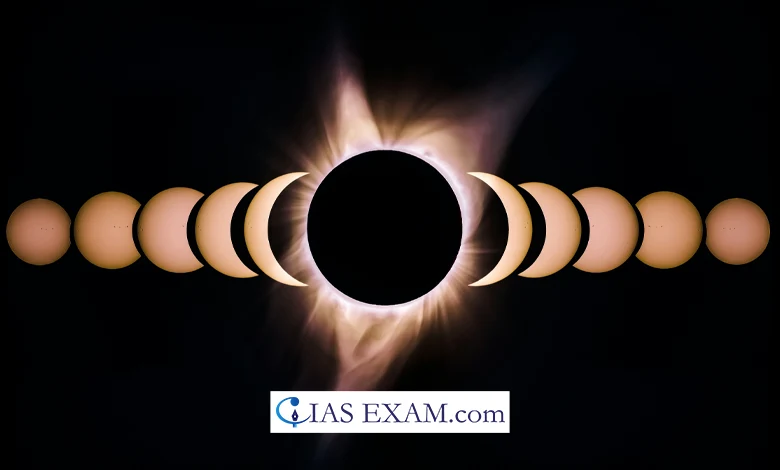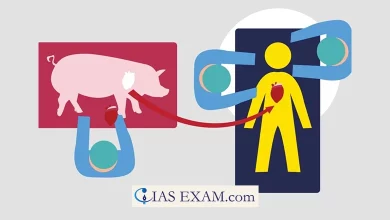
Context
It has been predicted that on April 8, a total solar eclipse will cross North America, passing over Mexico, the United States, and Canada.
What is a Solar Eclipse?
- It takes place when the Moon moves in the center of Earth and the Sun and blocks the light of the Sun (completely or partially), which casts a massive shadow on some parts of the world.
- A solar eclipse is witnessed only during the new moon (happens about 29.5 days) – when the Moon and Sun are aligned at the same side of Earth.
- The moon’s shadow has two parts: a central region (umbra) and an outer region (penumbra). Depending upon which a part of the shadow passes over the Earth, certainly one of three kinds of solar eclipses may be located:
- Total Solar Eclipse– The entire central portion of the sun is blocked out by the moon.
- Partial Solar Eclipse– Only part of the solar surface is blocked out.
- Annular Solar Eclipse
- The sun is covered in such a manner that only a small ring-like sliver of light is visible from the solar’s disc. This ring is called the hoop of hearth.
- An annular eclipse occurs when the moon is farthest from Earth. As the moon is farther away from Earth, it appears smaller and is unable to block the complete view of the sun, because of which the hoop-like shape could be seen.
Does a Solar Eclipse Happens Every Month?
- No. It is due to the fact the Moon does not orbit Earth in the same plane as the Earth orbits the Sun.
- However, there might be points/nodes (on the Moon’s orbit) at which the intersection takes place and each time the new moon crosses certain nodes, there’s a possibility for solar eclipses.
What is a Total Solar Eclipse?
- There are 4 different types of solar eclipses, which includes total, annular (outer edge of the Sun is seen), partial (crescent shaped sun) and hybrid (some parts see a total, even as others see an annular sun eclipse) solar eclipses.
- When the Moon blocks the Sun completely, the regions within the centre of the Moon’s shadow at the time witness a total solar eclipse.
Why is a Total Solar Eclipse so Rare?
- While there can be between 2 and 5 sun eclipses each year, total eclipses only show up about once every 18 months or so.
- A unique spot-on Earth witnesses a total sun eclipse only once in 400 years, because a total eclipse is only seen if one is standing inside the umbra shadow, which will only cover less than 1% of the globe. Hence, only a few people will get to see a total eclipse at a time.
Source: Down to Earth
UPSC Prelims Practice Question
Q.In the northern hemisphere, the longest day of the year normally occurs in the: (2021)
a. First half of the month of June
b. Second half of the month of June
c. First half of the month of July
d. Second half of the month of July
Ans – “b”





.png)



